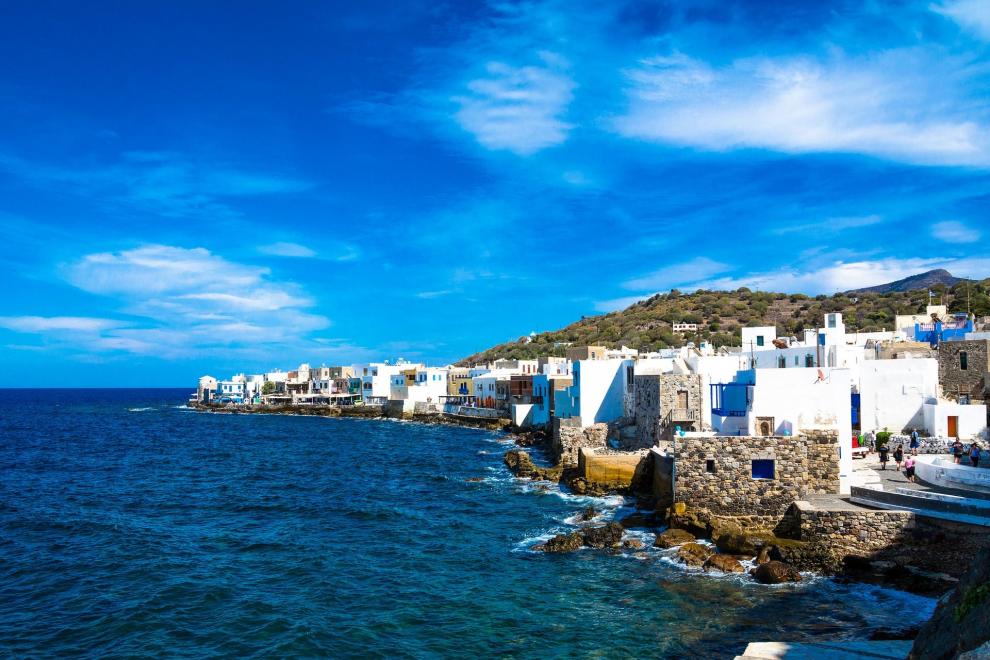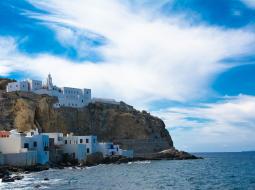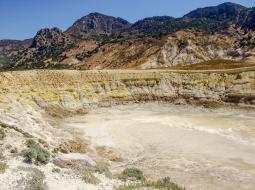Thessaloniki gets ready for its metro launch in November
The underground rapid transit lines have been under construction for almost two decades due to various project delays
 TheMayor.EU logo
TheMayor.EU logo 
Nisyros island is actually a volcano and its rocks are similar to those of southwestern Kos.
According to legend, Poseidon, aiding Zeus in the battle against the titans, broke off a piece of the nearby island of Kos and threw it at the fleeing giant Polybotis. The landmass became known as Nisorys and the volcanic activity is the wriggling and breathing of the giant trapped under it. In terms of science, however, we can safely assume that it took hundreds of thousands of years of underwater volcanic activity, for the first peek of the island to emerge from underneath the Aegean sea.
The first pre-Hellenic people to inhabit Nisyros were the Pelasgians. Their successor was Pelasgos, son of Zeus and Niobius. After the Pelasgians, the Kares were conquered and inhabited (Caria was a transport hub between Ionia, Lydia, Lycia and Phrygia) and the Leleges. Eventually, the Carians prevailed and, as excellent sailors and farmers, brought marine art and agriculture to Nisyros.
From 3000 BC to 1500 BC the Cretans live in Nisyros, shaping it according to their own of Cretan culture. The Phoenicians (1500 - 800 BC) were the first competitors and eventual successors of the Cretans. The Phoenicians were not a conquering people and took advantage of timely areas to move their ships and conduct their trade. They did not have their own culture, but they learned the writing and the arts from the Hittites and Egyptians and adapted it to the needs of commerce and shipping. In Nisyros, they established purple shelters for the purpose of shelling for a specific type of shells that produce a higher quality of purple, that is, a deep red paint colour. This is why Nisyros was also called Porphyry. Kos silk fabrics, light, transparent and elegant, were sought after because they were dyed with the purple of Nisyros. The result of years of Phoenician influence was the transformation of Nisyros into a permanent commercial and naval center, which eventually amassed great wealth, relative to its size, and boasts great amounts of naval power.
Nisyros is a Greek Island in the southern Aegean Sea. It has a population of 1000 inhabitants with more than 4000 Nisyrians living in Athens, New York, Canada, Australia and Rhodes. Mandraki is the capital of the island.
Nisyros has two mines in the Island of Yali producing pumice and perlite providing many of the jobs for the islanders. Tourism is the one major industry on which the economy of Nisyros is based.

The Monastery of Panagia Spiliani (Virgin Mary of the Cave) was built in the XIV century. The monastery is built on the highest point of the Nisyros island and is surrounded by medieval castle walls, although most of it lies inside a cave. It rises up on a 30-meter high rock at the far end of Mandraki, above all the buildings. It is accessible by climbing 270 steps.

An active volcano which a visitor can enter and walk around its crater can be found in Nisyros. Located at the heart of the island, the impressive caldera has a diameter of between 3-4 kilometres. Formed during the island’s explosive beginnings, there are magnificent views over this vast depression from the villages of Nikia and Emborio.
Within the caldera, there are a number of craters caused by hydrothermal eruptions, the largest of which have names such as Polyvotis, Alexandros, and Stefanos. One of the more recent craters, Stefanos is the most imposing and the most famous.
Stefanos is between 4,000 and 5,000 years old. Its diameter stretches between 260 and 330 metres, and it has a depth of around 27 metres. For visitors to Nisyros, Stefanos is often referred to simply as “the volcano”, as it offers visitors a once-in-a-lifetime opportunity to walk within a potentially active volcano.
Address: 853 03 Nisyros